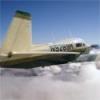Spark plug lead fouling issue
-
Members Online
- Rogerg
- Parker_Woodruff
- ohdub
- A64Pilot
- Hank
- Andy95W
- ElkoRandy20J
- Mister_Bevilaqua
- skykrawler
- hammdo
- dzeleski
- Dustoff49
- redbaron1982
- varlajo
- Jim F
- Denis Mexted
- Steve Hughes
- Kelpro999
- bgk
- Blaze
- Fritz1
- N201MKTurbo
- Healthpilot
- rwabdu
- EricJ
- Julian Bangert
- BaldEagle
- Vance Harral
- PT20J
- M Terry
- Keith20EH
- Shiroyuki


Recommended Posts
Join the conversation
You can post now and register later. If you have an account, sign in now to post with your account.